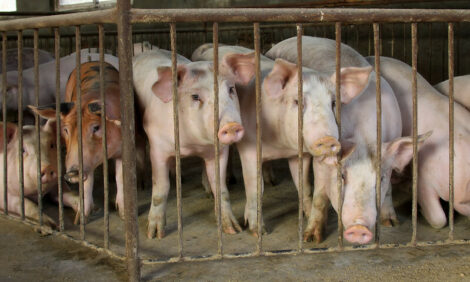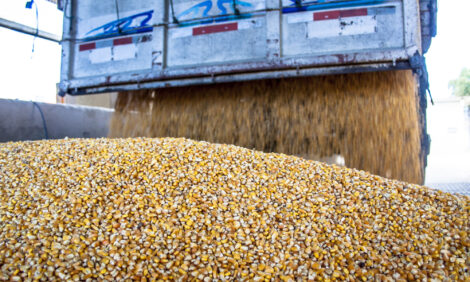



Gebhart: Cracking the Strep suis code
Streptococcus suis (Strep suis) is becoming more prevalent and more complex in US swine herds. The coccoid-shaped, Gram-positive bacterium is also a zoonotic disease, capable of transmission from pigs to humans. Connie Gebhart, PhD, a professor in the Department of Veterinary and Biomedical Sciences at the University of Minnesota, along with her team, is trying to crack the Strep suis code. The research team is comprised of Gebhart; Douglas Marthaler, PhD; and April Estrada, PhD candidate.“When we dug into Strep suis a little deeper, we found that even though it’s been around for a long time, there hasn’t been a lot of research on it in the US in the last 10 years. It’s been increasing in prevalence and in persistence, and seems to be affecting even pre-wean pigs,” Gebhart said. “Veterinarians are having a harder time controlling it…and now it’s emerging as one of the top 10 bacterial diseases of concern in the US.”
No simple answers
No one seems to know why Strep suis has re-emerged. “It’s not going to be a simple answer,” Gebhart said. “I think the pig might be changing, or the pig’s immune response might be changing. It could be the environment or the way we’re raising pigs. It could be the bacterium itself that is becoming more virulent. My area of research is to look at the bacterium first.”
Gebhart and the research team started by looking at a large number of isolates of Strep suis, but they wanted comparatives. They took isolates that were likely pathogenic, because they came from brain tissues of pigs with typical signs of the disease. Then, they gathered isolates of Strep suis that were probably not pathogenic, because they came from farms that either didn’t have typical neurological symptoms of Strep suis disease or were from farms with no history of the disease.
“We sequenced the genomic DNA from all 200-plus strains, and we’re in the process of comparing the DNA from those strains that came from the clearly diseased pigs, versus the non-diseased pigs, to see if we can find any genomic elements that are involved,” Gebhart said.
They are seeking answers to the following questions:
- Are there certain sub-types associated with neurological disease? Have different serotypes or sequence types of Strep suis become prevalent in the US? Are they possibly causing the current problems?
- Are there different virulence factors in the Strep suis strains that are circulated in the US compared to global virulent strains?
- Are random mutational changes, called single nucleotide polymorphisms, occurring throughout the genome and changing the pathogenicity of some of the strains in the US?
Different genetic types
Complicating the issue are the different genetic types of Strep suis, even on the same farm sites, Gebhart explained.
“We’ve divided [the isolates] into three different groups,” she said. The pathotypes associated with clinical signs and typical neurological symptoms, and/or arthritis, meningitis, septicemia, endocarditis, epicarditis (the first group), and the commensals (the second group) seem to be early colonizers in the normal flora and upper-respiratory tract of pigs throughout their life.
“We need to figure out which ones are normal flora and which ones are actually causing the disease,” Gebhart said.
The third category is more complicated. Looking at the history of the pigs from which the isolates were cultured, she said it’s not clear if they had typical central nervous system/neurological signs of the disease or just pneumonia or upper-respiratory disease.
Know your enemy
When Pig Health Today asked how a veterinarian can differentiate the categories on a farm to develop an effective control program, Gebhart said, “First you need to know your enemy, and this involves getting a good diagnosis.”
If a farm has had the disease before and the clinical signs are the same, perhaps one could suspect Strep suis, Gebhart said. If gross lesions are evident, a veterinarian could do a necropsy. It’s important to culture the organism and look at the histopathology. If they support each other, a culture from the systemic tissues (particularly brain tissue) is helpful, she explained.
“If you do the histopathology and you see lesions, it suggests the organism you cultured from the brain is the cause of it. But sometimes you get more than one type of Strep suis from these tissues,” she said.
It’s difficult to know the next step in this case, because when those pathogenic strains were serotyped in previous years, Gebhart said they would show up as serotype 2, which is known to be highly pathogenic.
“Currently in the US, we don’t see many serotype 2,” she said. “We see a lot of other serotypes. Are those pathogenic? We need to do the research to figure that out.”
Control measures
Antibiotics are helpful with pathogenic serotypes, Gebhart said, but not as much with the opportunistic strains of Strep suis. What’s more important is the trend toward increased vaccinations and less use of antibiotics.
“The current control method is with an autogenous vaccine,” she said. “In order to produce an autogenous vaccine, you need to grow large amounts of the organism that caused the lesions, but which one is it, if you had several isolates? You have to choose the right subtype that is pathogenic in that situation, and it’s a tricky process.”
Research in Canada and Europe shows there isn’t cross-protection between different serotypes or subtypes of Strep suis, she explained. The one causing the lesion needs to be in the autogenous vaccine, and that can be difficult.
The first thing a producer and his or her veterinarian should do is determine how Strep suis is coming in, Gebhart said, and ask these questions:
- Are the pigs getting it upon birth?
- Is it in the site?
- Is it coming in with the gilts from the source herd?
“In order to answer those questions, we need to be able to differentiate strains,” she emphasized. “We need to have tools to be able to say, ‘This strain is identical to that strain, and therefore it came from that source.’ We don’t actually have those tools perfected yet.”
Next steps
“Gebhart and the research team have already identified virulence-associated genes in their pathogenic set of isolates that are different from the ones that were previously published as classical or known virulence-associated genes of Strep suis.
“Our next step is to confirm that these are actually important in defining the pathotype of Strep suis,” she said. “Even further than that, we may be able to find from the genomes mentioned earlier new genes that haven’t been described that potentially are involved in this increased pathogenesis of Strep suis.”
She is hopeful the research team will, indeed, crack the Strep suis code, and they’re giving it their best shot.






